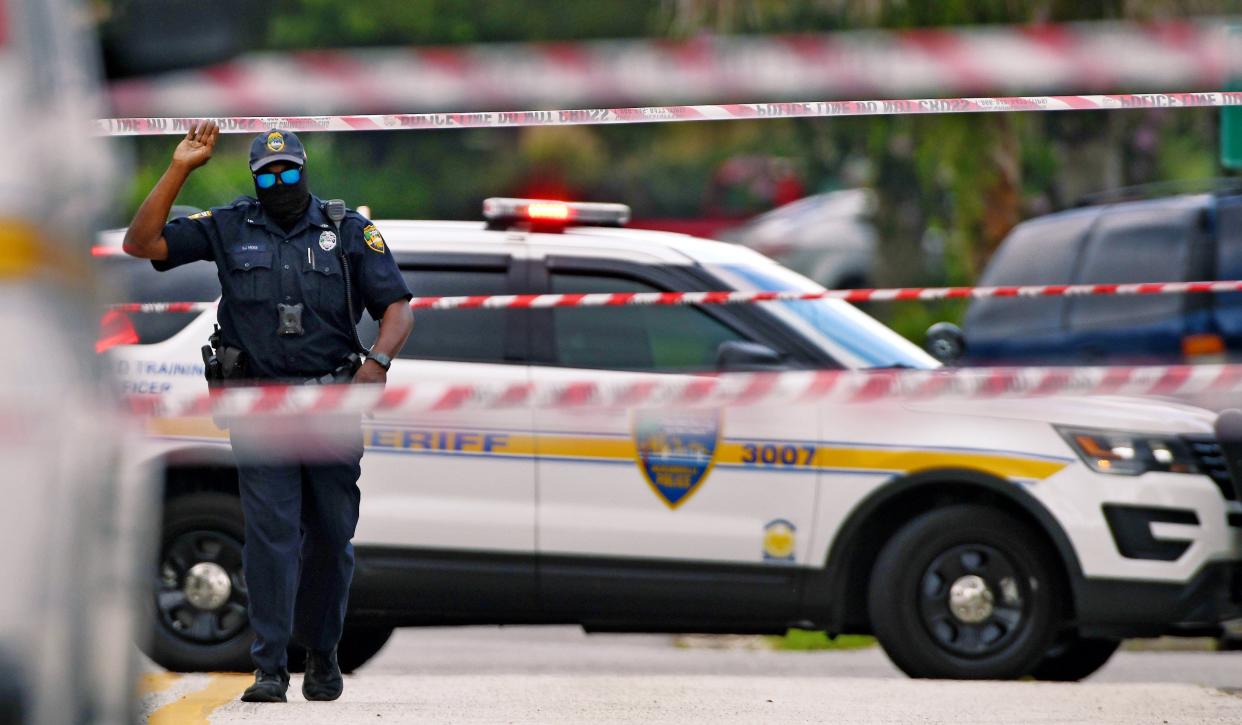By the numbers: Here's a look at Jacksonville's 2021 homicides compared to 2020

Jacksonville finished the year substantially down in the number of homicides, unofficially 129 compared to 2020's staggering 177. Here's a breakdown of some of what the numbers tell.
Century mark
The city eclipsed 100 homicides for the 10th-straight year. It also marked the sixth straight year with at least 120. In the last decade, Jacksonville has lost 1,395 lives as a result of homicides. That's an average of about 139 a year. The high since The Florida Times-Union began keeping track in 2003 was 2020's 177 by far, and the low — also by far — was 86 in 2011.
Deadliest and safest ZIP codes
The 32209 ZIP code in the Moncrief/Grand Park area maintained its spot with the most homicides, 21, well ahead of 32206's 14, 32210's 11 and nine each in 32208, 32211 and 32254. Several had zero: 32212, 32221, 32223, 32226, 32227, 32228, 32234, 32250, 32258 and 32073.
A year earlier saw 31 people killed in 32209 followed by three tied with 19 — 32208, 32210 and 32218. The totals do not include the out-of-jurisdiction Beaches communities, which didn't have any anyway.
Age of victims
Much like 2020 when 62 of the people killed were 21 to 30 years old, that was the most vulnerable age range in 2021 with 50 deaths. Next was 31 to 40 years old with 30 casualties. Young victims 11 to 20 years old made up the third-worst rate with 16 victims, nearly half the prior year's 31.
Number of victims, race and gender
African Americans continued to suffer the most deaths with 93, but considerably down from 2020's 131. White victims totaled 27 last year compared to 36 the previous year. Hispanics, at nine homicides, passed the 2020 total of eight.
Only 16 of the victims were female, well below the 30 killed in 2020 The males went from 146 to 113.
Number of arrests, race and gender
Police made murder arrests in at least 47 cases. Of the 63 suspects, there were 40 Black males, 10 white males, seven Black females, three white females and two Hispanic males.
The Times-Union kept up with the arrests in the 2020 cases. They're up to at least 51 homicides having suspects in custody. Of those 65 suspects, there were 42 Black males, eight Black females, nine white males, two Asian males, one Hispanic male and two white females.
Fatal police shootings
Officers killed three suspects, two Black men and one white. That's substantially lower than the eight killed in 2020 and a ninth deemed to have shot himself before police opened fire. Three were Black (four if counting the self-inflicted), three Hispanic and two white.
Justifiable
Several cases have yet to be ruled on, but 13 have been deemed justifiable and three accidental. In the previous year, 26 homicides were ruled justifiable or excusable, many of them police shootings. These do not count as murders.
Cause of death
Shootings were responsible for 109 homicides, followed by nine stabbings, five beatings, one stranging, one falling off a vehicle and four with no cause provided. That compares to 151 shooting homicides in 2020, followed by nine stabbings, nine beatings, one hit by car and eight with no cause provided.
There were no murder-suicides in 2021, compared to two in 2020 and two attempted but the suspect survived.
Worst and best months
February topped the calendar year with 17 homicides followed by 14 in July. The year before saw 21 people killed in the worst month April and another 20 in July.
December in both years was the safest month currently at seven and preceded by eight.
About this data
As a footnote, The Times-Union’s numbers may vary somewhat from the Sheriff’s Office due to some procedural differences. The main one is The Times-Union goes by the date the injuries happened, not when the person actually died or when it was determined to be a homicide.
In some cases, a person is wounded in one year and dies the next. The Times-Union lists the initial date, while the Sheriff’s Office documents the latter. Similarly, a case occasionally may not be ruled a homicide until a year later. The Sheriff’s Office cannot go back and change a year’s data, whereas the newspaper does. It’s usually only a matter of a few cases though.
The other terminology to note is the difference between a homicide and a murder: They are not interchangeable. Murders do not include justifiable actions such as self-defense or just cause; homicides do. So homicide numbers will always be higher than the murder totals that law enforcement agencies include in their Uniform Crime Reporting to the FBI.
This article originally appeared on Florida Times-Union: By the numbers: Jacksonville ends 2021 with 129 homicides

